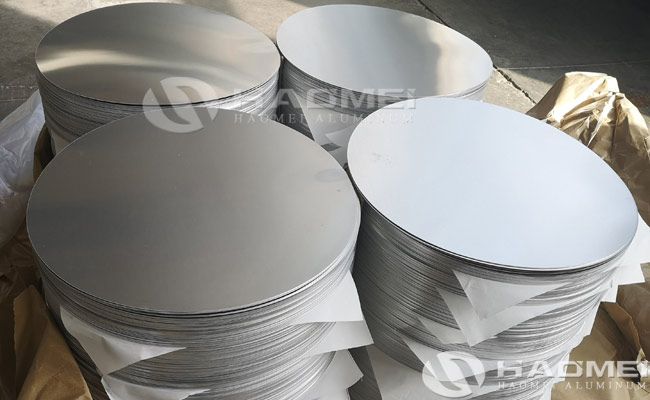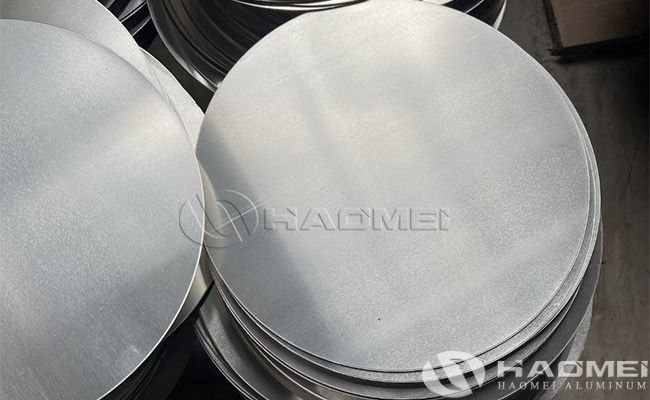DC aluminium circles (Direct Cast) and CC aluminium circles (Continuous Cast) are aluminum circles produced by two different casting processes. The two casting methods have different characteristics in the production process, and these differences affect the properties and applications of the final product.

There are some differences between DC and CC aluminium circles in terms of properties, applications and production processes. The following is a comparison of these two types of aluminum circles:
1. Production process
DC aluminum circle (Direct Casting) is produced by direct casting method, which usually involves casting molten aluminum directly into aluminum circles. This process can reduce the number of processing steps to maintain the uniformity of aluminum.
- Raw material preparation: usually aluminum alloy billet or molten aluminum as raw material, after extrusion or casting.
- Heating: The aluminum alloy billet is heated to a suitable temperature (usually between 450°C and 550°C) to increase its plasticity and reduce its strength.
- Rolling or stretching: The heated aluminum alloy billet is rolled on the rolls of a rolling machine, plastically deformed and rolled to form the desired thickness, or stretched by a stretching machine, which plastically deforms it during stretching to form the shape of an aluminum disc.
- Subsequent processing: The processed aluminum circles are cooled, cut and inspected to ensure their quality.
CC Aluminum circle (Continuous Casting) adopts the continuous casting method, in which liquid aluminum is continuously cast into aluminum sheets through a casting machine, and then cut into aluminum circles. This process is suitable for mass production and enables higher productivity.
- Raw material preparation: Aluminum alloy lumps are heated until they melt, and the melt is poured into a forming machine.
- Forming: The molten aluminum is formed into the shape of an aluminum circle in the forming machine by centrifugal pouring or die casting.
- Subsequent Processing: The formed aluminum circles are also cooled, cut and inspected to ensure their quality.

2. Performance
- DC aluminum circles:
Usually has better mechanical properties and higher strength, because it can maintain a better grain structure during the casting process.
Surface quality is relatively high, but may have minor casting defects.
- CC aluminum circles:
Typically has a better surface finish and is suitable for applications requiring a good appearance.
Mechanical properties are slightly inferior to those of DC aluminum circles, and larger grains may occur, but they still perform well in some applications.
3. Uses
- DC aluminium circles:
Commonly used in the manufacture of high-strength, high-demand products, such as pots and pans, kitchen utensils, electronic devices.
Suitable for applications requiring high temperature resistance and good thermal conductivity.
- CC aluminum circles:
Suitable for products with high requirements on appearance, such as lamp housings and decorative parts.
Due to its good surface quality, it is also suitable for printing and coating treatment.
4. Cost
- DC aluminum discs:
The production cost is relatively high due to its complicated production process and high energy consumption.
- CC aluminum discs:
Usually lower cost and suitable for mass production due to high continuous production efficiency.
When choosing between DC and CC aluminium circles, the main consideration is the specific needs of the product and the application scenario. If the application has high requirements on the mechanical properties, internal quality and consistency of the material, it may be more suitable to choose DC aluminum circles; while if the consideration is production efficiency and cost-effectiveness, and the requirements on performance are not very strict, then CC casting may be a better choice.